Guest author and regenerative tourism professional, Patricia Deva, writes about The Festival of the Virgin of Candelaria and its relationship with Carnival and indigenous dances held every February in Puno, Peru.
The first period of the history of the Altiplano of Puno, after the Spanish invasion, extends 130 years between 1533 and 1657. The arrival of Catholic missionaries committed to the evangelization of the indigenous peoples and the destruction of idolatry created a dualism between the Catholic religion and the original beliefs.
Origins of the Festival of the Virgen of Candelaria
The festival of the Virgin of Candelaria has origins in Christianity, while also adopting the Andean worldview which includes natural entities like the Sun, the Earth, the Water, the Mountain, and the Wind. The story of the Virgen of Candelaria begins in the Canary Islands of Spain. She appeared as an image before two shepherds and was later credited with miracles. This is how she arrives in Peru and, although we do not know with certainty what the correct version of her veneration is, we do know that the Catholic religion used saints, virgins, and crosses as a form of evangelization of the Andean world.
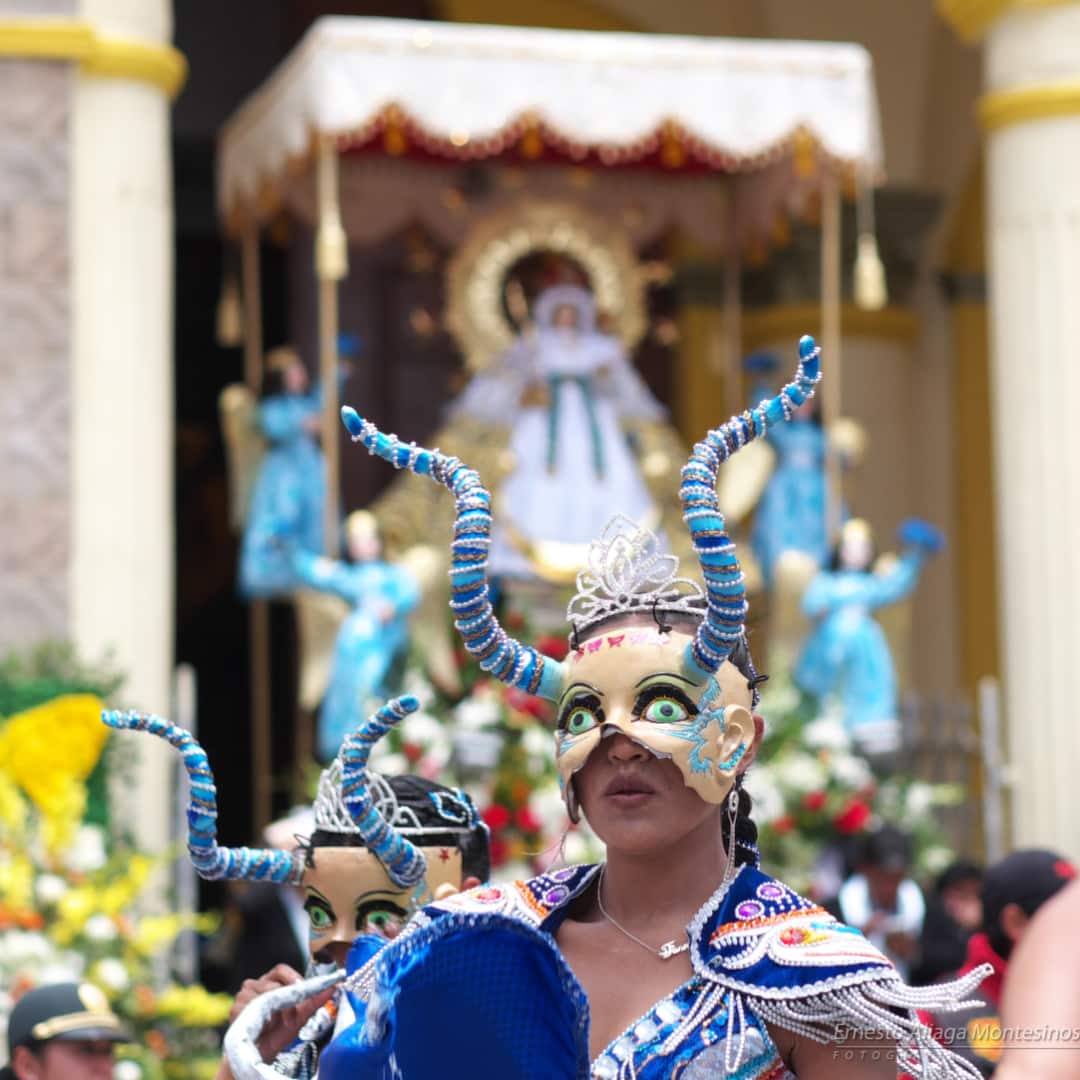
The Spanish invasion of the Peruvian Andes caused a clash between two worlds. A juxtaposition was created between the Andean cosmovision and Catholicism. The two continue to coexist to this day.
In this context, the feast or festival of the Virgin of Candelaria coincides with the harvest of the first fruits of the earth, especially the potato. It is a time to thank Mother Earth for the abundance of her fruits and to ask for a good farming year.

The Feast of the Virgin of Candelaria in Puno, Peru
Every year in the month of February, Puno, a city located on the shores of Lake Titicaca in southern Peru, pays homage to the Virgin of Candelaria and Pachamama, Mother Earth. Men in the Peruvian Andes dress in colors. Faith is the common intention of its citizens. The streets are flooded with devotion and dance; syncretism is omnipresent. It is a time to celebrate cultural diversity as a testimony of respect and dialogue between Aymara, Quechua, and Creole communities; between the city and the countryside; between the mountain range, the shores of the lake, and the Amazon jungle.
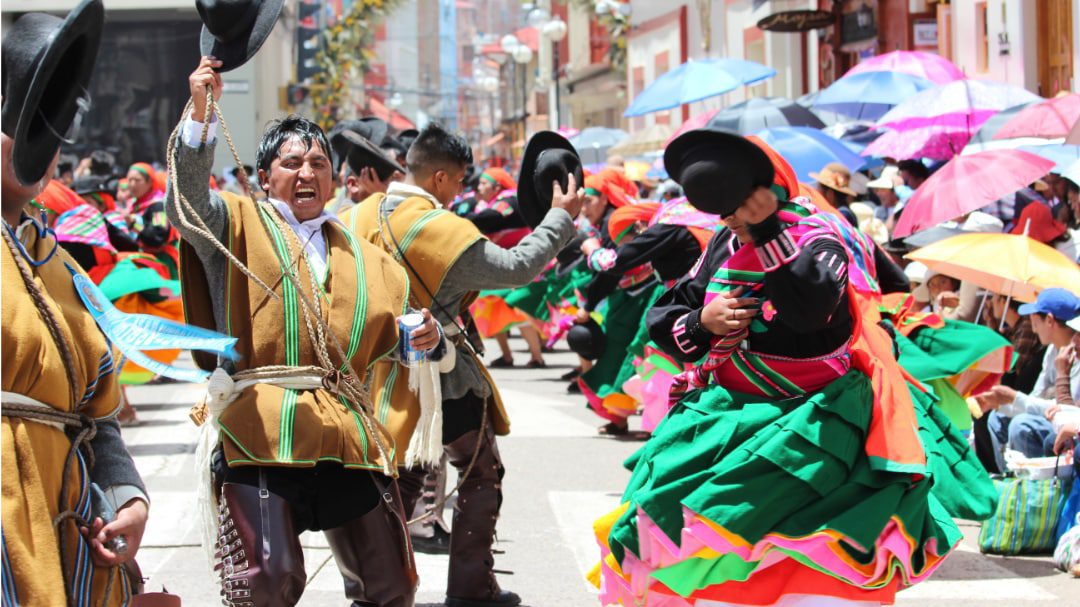
The feast of the Virgin of Candelaria was declared an Intangible Heritage of Humanity by UNESCO in 2014.
In the lines that follow, I will try to take the reader on a journey to the different stages of the most anticipated party of the year, a party that today in a post-covid scenario will need to be reinvented.
Las Albas Mark the Beginning of the Party
The “albas” await the sunrise with a mixture of worship, dance, song, and music, at the foot of the “Cerrito de Huajsapata”, a powerful place that for years has started the festivity, perhaps as a way to continue showing respect for the Pachamama and the Apus (mountains).
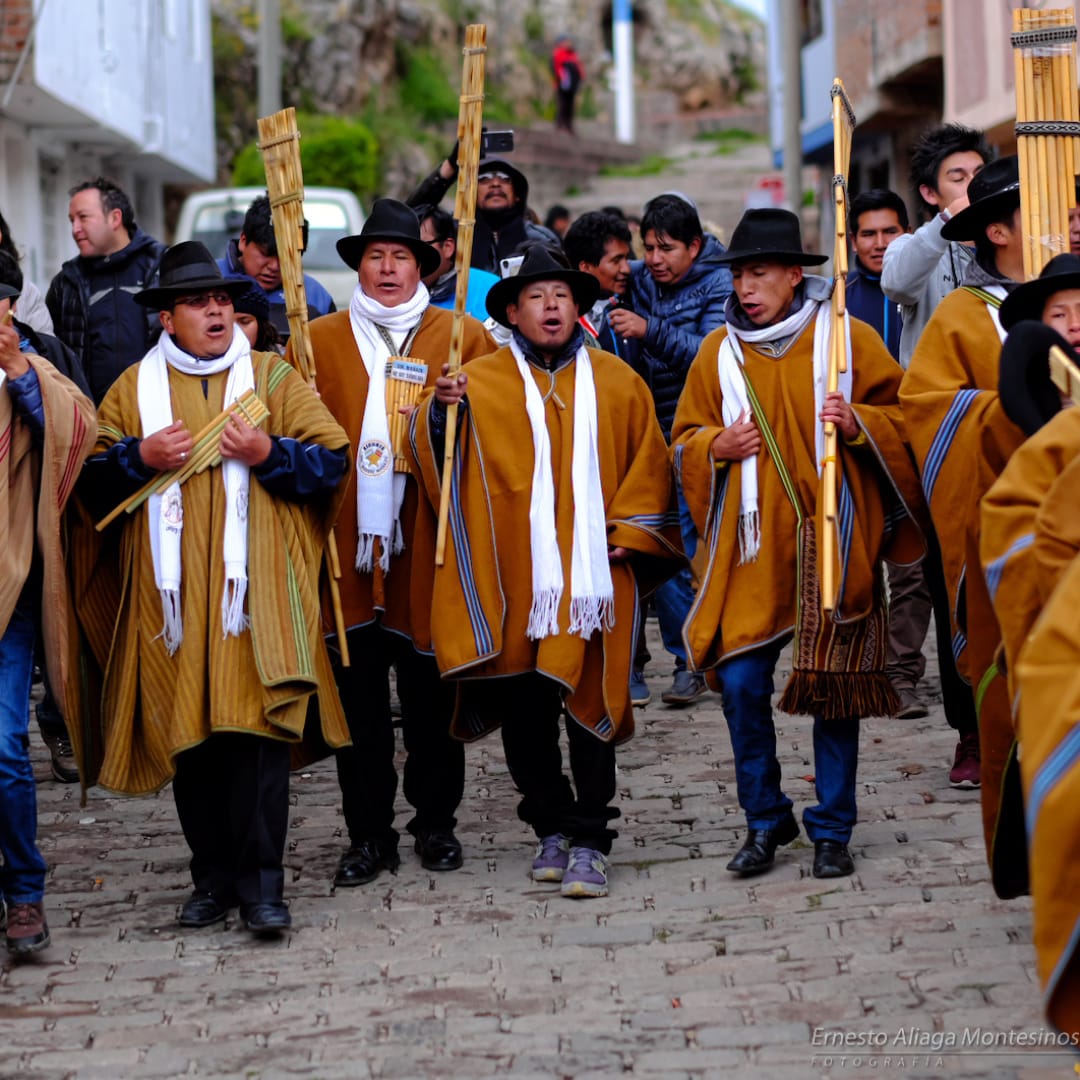
Once there, the dancers, the sikuris, and the guests gather in the cold of the early morning while the alferado generously invites everyone to enjoy the warmth of a hot punch. Everyone enjoys singing and dancing until they see the first rays of the sun appear. This symbol of a new day and sign of the beginning of the festival of the Virgin and the Pachamama. On February 2, with the first rays of the sun, everyone descends in camaraderie accompanied by rockets and bombards from the Huajsapata Hill to gather for Mass in honor of the Virgin.
Native Dances
The people of Puno manifest their joys and sorrows through dance and music. They do this by dancing through the streets, squares, and parks of the city. Traditional dancers, alive with color from their costumes, arrive from rural areas accompanied by the rhythm of ancestral instruments such as pinquillos, quenas, tarkas, and sikus.
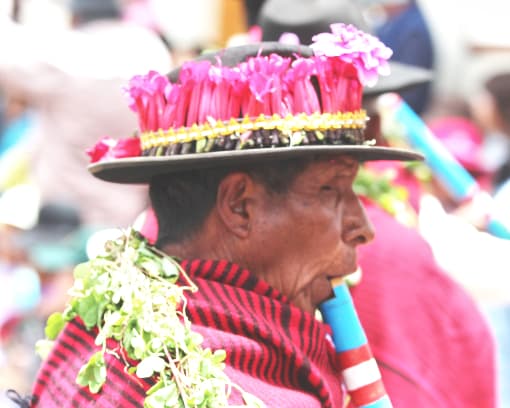
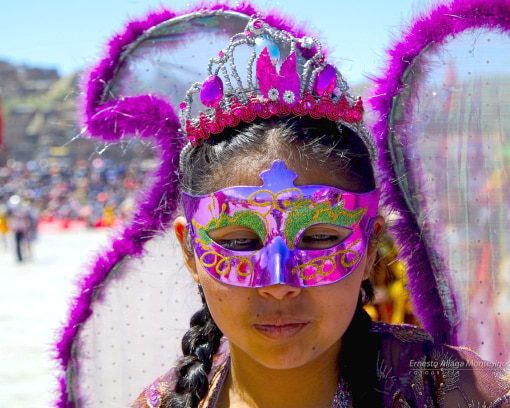
The traditional dances are an expression of our Andean identity on both the Aymara and Quechua sides. Each of the dances shows an activity, be it harvesting and grazing or of weavers and spinners. There is the representation of hunting, also the dance of warriors, carnivals, and wiphalas; there are those of satire and the inevitable sikuris that permeate the rhythm and passion for the Andes. It is important to note that Puno has approximately 300 dances, all very different in dress and rhythm. Consequently, Puno is called “The Capital of Peruvian Folklore.”
If you, the traveler, enjoy art, dance, color, and music played with ancestral instruments, this is an experience to enjoy. The thousand colors of the Andean world overflowing with art and culture.
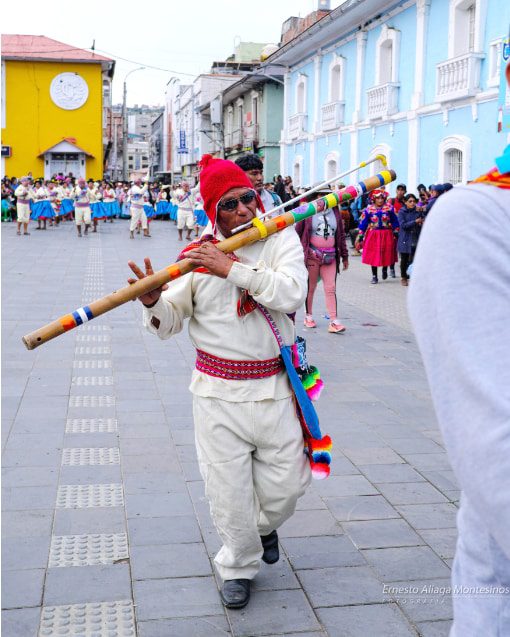
Costumes of Lights
The people of Puno venerate our patron saint with music, song, and dance. The Festivity of the Virgen of Candelaria grew gradually and went from being a festival celebrated only on February 2nd to becoming a massive and lavish event, motivating the institution of: “the eight-day celebration.” The eight-day tradition is questioned by a conservative sector of the Catholic Church as they consider it a pagan act that collides with Christian principles.
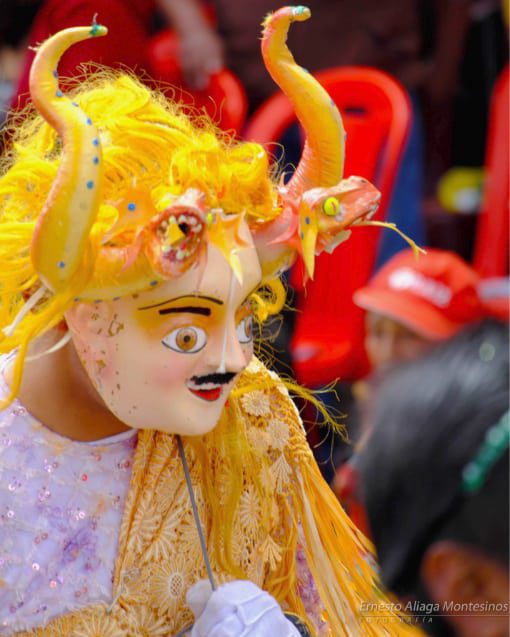

During the eight days of the festivities, the costumes of lights burst into the city:
- the diablada (dance between good and evil)
- the morenada (an allegory to the enslaved peoples who were brought to Puno in colonial times)
- waka waka (a satire of bullfighting)
- flare (represents the arrival of the muleteers)
- kullawada (the world of weavers and spinners)
- kallahuaya (dance of healers, the yatiris)
- caporales (with their steps they highlight the strength of men and sensuality of women)
And you shouldn’t miss the different groups of zampoñistas who sweeten each of the days of this party.

During the procession, the devils dance with the angels, the bears with the masked ones, the mamachas with the caporales, the morenos, the china-diablas, the ayarachis, the sikuris and, so practically the entire city dances from dawn to dusk. After the main day, each of the groups performs their cacharpari (end of party dance) so the city will continue dancing for many more days. If you want to enjoy the silence of the night in and around Puno, Peru, it is better to leave the city when these festivities are taking place!
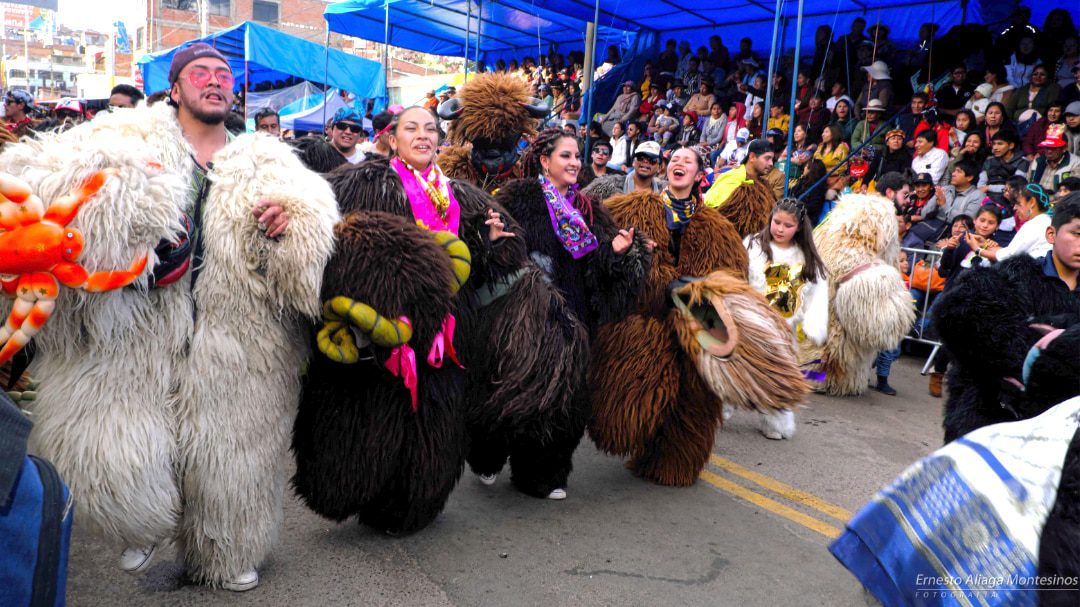
Carnival and Pachamama, the party continues
“The Andean carnival is a pre-Hispanic agricultural celebration of gratitude to the Pachamama, our Mother Earth, that provides us with fruits. In return, we must take care of her with devotion, thank her with joy, be grateful to her for our lives; celebrate her first offspring, her first flowers, her first fruits, celebrate life by defeating sadness” ~Enriquez, The Fiesta In My Pueblo Is With Wiphalas, 2011
It is therefore a ritualistic and sacred time for rural communities. Consequently, each village has an important celebration. Andthe Pujllay or Carnival has various manifestations throughout the region, both on the Quechua and Aymara sides. The most representative is the “wiphala”, a dance in which the main accessory in the choreography is a white flag, reproducing the joy that exists in the caretaking and sowing of the earth.

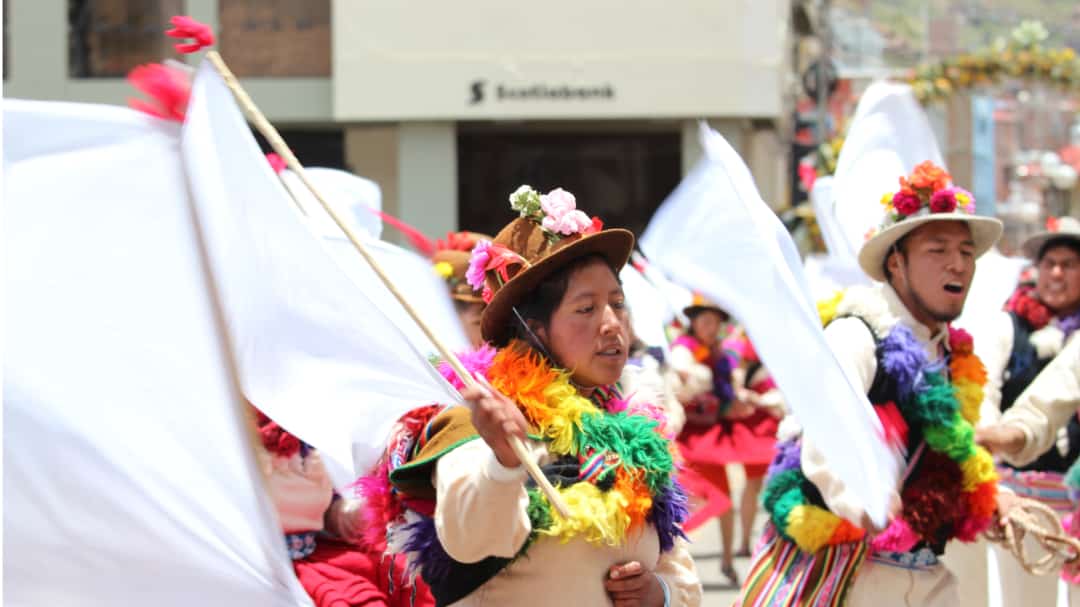
Currently, there are several dances of Puno that have been declared Cultural Heritage of the Nation. One of them is the Carnival of Patambuco which brings together in its choreography the agricultural cycle and the importance of land and water. In addition, it shows the Andean cosmovision.
With the intention of taking the reader on a trip to the carnivals of this region of Peru, I will inform tell you that they begin on Carnival Sunday with the decorating of houses with yellow flowers on their sidewalks as a sign of a good agricultural year. It is the day of “compadres and comadres”, the manifestation of ayni ( the principle of Andean reciprocity). This is a day in which the compadres, those closest to the family, reconcile and visit each other to bring gifts of friendship. It is necessary to be in harmony before the arrival of Carnival because the party embodies gratitude to the Pachamama.
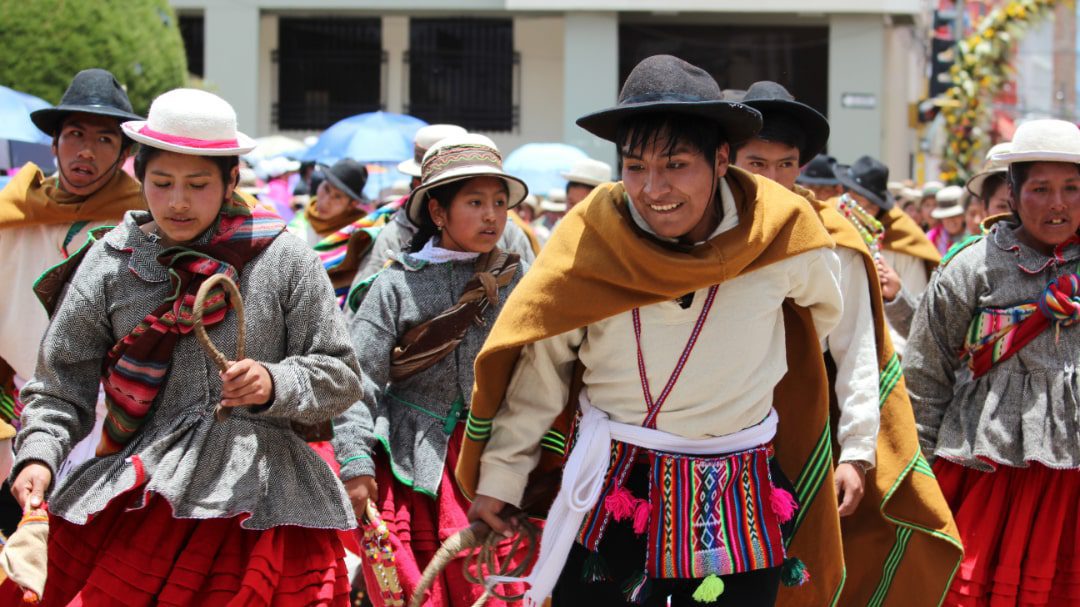
Groups from different communities arrive dressed in their traditional costumes playing the pinkillos, a type of ancestral musical instrument. played during Carnivals as a symbol of the call to rain.
Meanwhile, in the city, the games begin with water, paint, colored powders, and, in recent years, foam spray (nothing natural). The carnival queen comes out and again the streets, squares, and parks are a stage, this time, of dances, tarkadas, and pujllay (game, in Quechua).


The Pandilla or Marinera Puneña close the carnivals
The Pandilla or Marinera Puneña was born a century and a half ago. It is a dance of mestizo-urban origins and takes place to announce the end of Carnival.
The dancers descend from different points; the comparsas with their “estudiantinas” (musicians who accompany the dancers with guitar, mandolin, guitarrón, charango, and accordion) leave dancing from different neighborhoods of the city. The cholitas, dressed in brightly colored skirts, matching shawls, short white boots, and the typical Puno hat, accompany their costume with a handkerchief that they move to the sound of the music. The cholitos, dressed in white pants and black jacket with shoulder shawl and black hat, swing a scarf to the rhythm of the accordion. They say that this dance is born from the time-honored family trips to the countryside, parties that ended in song and dance. I will say that the Puno Pandilla was born in the heat and emotion of Carnival to take place on Ash Wednesday and therefore mark the official end of the party.
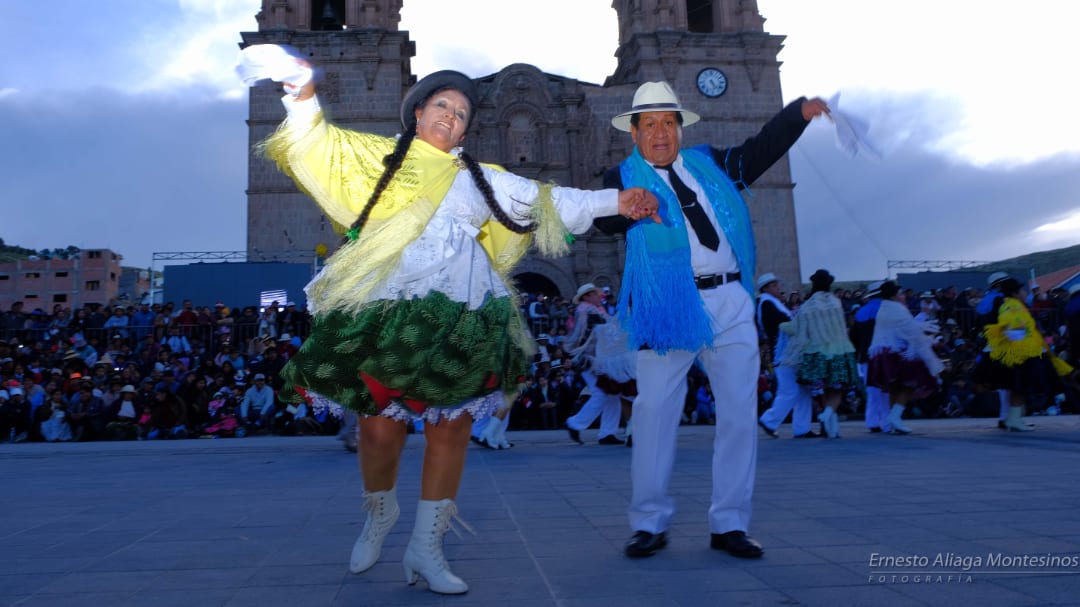
A full month to reconnect with the culture and identity of the Andean world. The power of a place that helps us understand that we are all sons and daughters of the same Mother Earth.







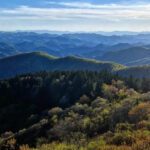

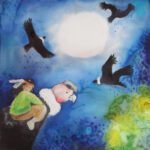
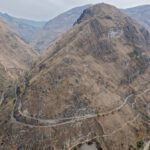
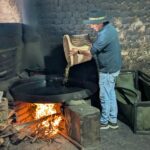


0 Comments